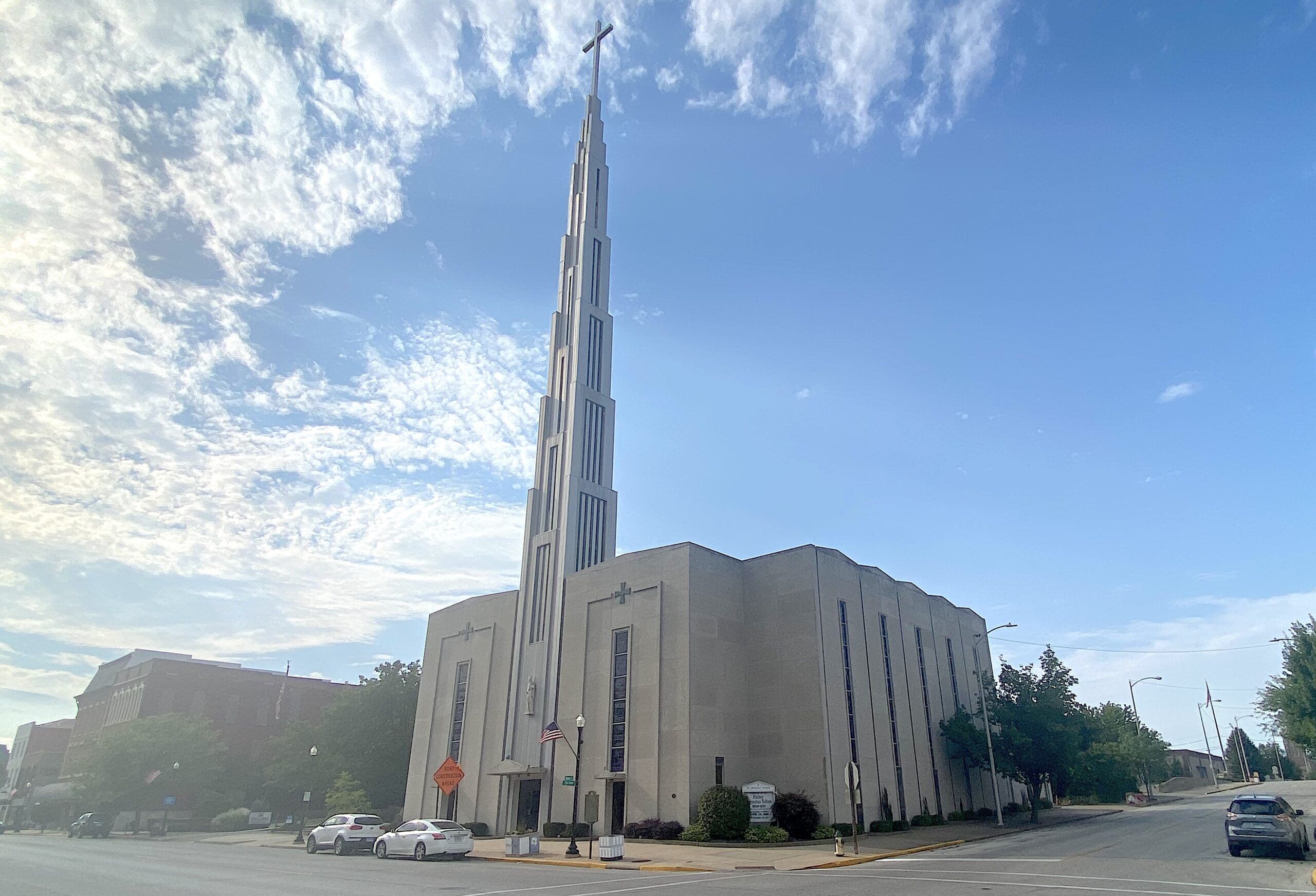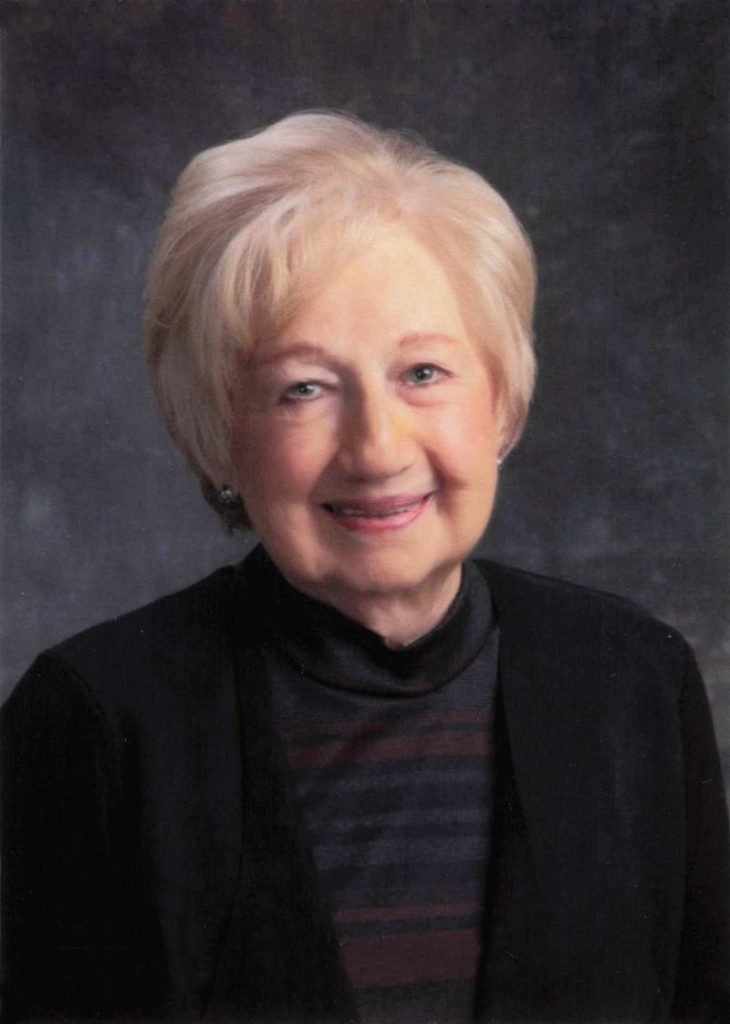Preservation Commission reconsidering St. Boniface as local landmark; diocese says church is in disrepair

QUINCY — The Quincy Preservation Commission voted unanimously last week to continue its review of a resubmitted application to make St. Boniface Church, 641 Maine, a local landmark despite a request from the Diocese of Springfield for the commission to determine that further consideration of the application is “not warranted.”
An application for landmark status for the historic church was denied by the Quincy City Council in 2007. Edward Husar of The Herald-Whig reported that aldermen voted 8-5 against the proposal to force the landmark designation on the owner, the Diocese of Springfield. Six aldermen who voted on the issue are still on the City Council. Mike Farha (R-4) and Tony Sassen (R-4) voted in favor of the proposal, and Dave Bauer (D-2), Mike Rein (R-5), Jack Holtschlag (D-7) and Rich Reis (D-7) voted against it.
Janet Conover, a former president and current member of the Preservation Commission, resubmitted the original application from 2007 for consideration last month and provided an addendum.
“This St. Boniface Church building has something special to add to our community, so we should not lose it,” she said.
Local landmark status protects the exterior of a building by specifying architectural features that must remain intact for the building to retain landmark designation — which, in turn, makes it more difficult for the building to be sold.
“If it’s a local landmark, then the community does have some teeth,” said Darin Prost, president of the Preservation Commission. “You know that (a property owner) just can’t come in there and do whatever they want to the building on the exterior. It preserves the architectural significance of the building.”
Conover said the preservation of the building is important because it is an “outstanding example” of mid-20th-century modern architecture and because it represents the history of the Catholic Church in Quincy going back to 1833. She said its architectural importance was illustrated when the Illinois Council of the American Institute of Architects selected St. Boniface as one of its 150 Illinois Great Places. The only other structure in Quincy on that list is the Gov. John Wood mansion, 425 S. 12th.
St. Boniface also was the site of the first Mass for Father Augustine Tolton, the first Black Roman Catholic priest in the United States, on July 18, 1886. Francis Cardinal George initiated the canonization process for Tolton in 2010, announcing the cause for canonization for sainthood. Pope Francis advanced Tolton’s cause for sainthood in 2019, elevating him to “Venerable.”
“When you add in Father Tolton’s potential for being a saint, all of a sudden, there’s an enormous amount of momentum (for landmark status for St. Boniface),” Prost said.
St. Boniface Church merged with All Saints Parish and St. Mary Church to form Blessed Sacrament Parish in 2006. Bishop George Lucas held the closing celebration of Mass at St. Boniface Catholic Church on June 28, 2007.
St. Boniface remains under the care of Blessed Sacrament. Today, it is rarely used for religious services. Conover said in her application that Blessed Sacrament pays the utility and most maintenance bills for St. Boniface. The lights in the church windows and the tower are lit at night.
James A. Bock, chancellor and general counsel of the Diocese of Springfield, attended the Preservation Commission’s meeting on Tuesday. He sent a letter to the commission on Aug. 1 saying Blessed Sacrament does not have “a viable plan” for any future use of St. Boniface and that it has been “a financial hardship” for the parish to attempt to keep up with its maintenance.
Bock said Bishop Thomas John Paprocki issued on Nov. 18, 2023, a decree creating a temporary committee to evaluate St. Boniface as a possible site for a shrine for Tolton.
“The owner and diocese do not foresee a viable use for St. Boniface outside of the possibility of a shrine,” Bock’s letter read.
He said the temporary committee says the church has “fallen into disrepair,” including some issues that may develop into “significant safety concerns.” Among the issues are:
- The steeple has significant damage that needs to be addressed to preserve its structural integrity.
- The church needs mold remediation to be safely used.
- The church needs additional repairs, updates and asbestos abatement, and an adjacent property needs to be bought for parking and a visitors center.
Conover said she and other Preservation Committee members toured the inside of the church after last Tuesday’s meeting, along with Bock.
“The interior is in remarkably good condition,” Conover said. “There is still a respect and even spiritual feeling one receives when standing in this place.”
Bock wrote that $5 million is needed for St. Boniface to serve as a shrine for Tolton.
“(The temporary committee) has not yet been able to perform an assessment as to whether a successful capital campaign could be held to raise these funds,” he said.
He said the committee also is considering demolishing the church and building a shrine church and center.
“If the Preservation Commission determined to give this re-submitted application new consideration at this time, we would consider it to be an unlawful interference with the internal decision-making of the Catholic Church in contravention of the First Amendment of the U.S. Constitution, an interference that we believe the City of Quincy does not intend,” Bock wrote.
“The landmark designation process would cause undue pressure and time constraints on the temporary committee to prematurely come to final conclusions about the suitability and sustainability (of the church to be a shrine for Tolton).”
According to the Diocese of Springfield website, the parish, originally called Ascension of Christ, was established in 1837 and parishioners consisted primarily of German Catholics. The first church was built on Seventh Street between York and Kentucky in 1838, making it the first Catholic church in Quincy. A second church was built in 1839 on the northwest corner of Seventh and Maine, but it quickly became too small to accommodate the growing number of German Catholics in the city. In 1848, a larger church was built and dedicated to St. Boniface.
Discussions about the high cost of repairing the church began in the early 1950s, and Bishop William O’Connor and a parish committee determined in 1951 that the church needed extensive improvements and repairs. A plan was created to build a new church by 1965.
However, a fire broke out in the tower on June 19, 1959, and the church suffered extensive smoke and water damage. Work on a new church, designed by architect John Benya, began in the fall of 1960. It was completed in June 1962. Many people believe St. Boniface, with its distinctive metal steeple rising 186 feet from its base to the top of the cross, was one of Benya’s greatest achievements.
The “St. Boniface Catholic church Dedication of a New Building” book, written in 1962 by Msgr. Henry Schnelten and Rev. William Kekeisen, included the following passage:
“On May 3, 1961, the construction engineers of the Michelmann Steel Co. erected the beautiful stainless-steel cross above the tower of the church. … After the erectors descended from the tower … they observed a strange phenomenon in the sky. One of the workmen … rushed to the rectory and asked the pastor and his assistant to look into the sky above the cross.
“The clouds plus the sun formed a distinct halo approximately 500 feet in diameter, and the cross stood in the center. While this could perhaps represent nothing significant, there is no question as so the fact, and the halo remained there for a half hour. While this positively not a hallucination, nor was it anything miraculous, nevertheless we can look upon it as a good omen and surmise that it was acceptable to God. That in this strange way, He gave assent to the monument erected in his Honor.”
“If this church building was demolished and a new church or Tolton shrine built on the site, that original spirituality present when the church was built could possibly be lost forever,” Conover said.
Preservation Commission members are Prost, Conover, Karol Ehmen, Walt Giesing, Michele Khoury, Dick Wellman, Paul Geers, Jamie Foster, Jason Shimp, William Arp, Suzie Irwin-Wells and two Quincy City Council members — Eric Entrup (R-1) and Jake Reed (R-6).
A public hearing on the landmark designation has been set for 5:30 p.m. Sept. 4 at a site to be determined. The Preservation Commission is tentatively scheduled to vote on the landmark designation on Oct. 8, with the City Council potentially voting later in October.
Miss Clipping Out Stories to Save for Later?
Click the Purchase Story button below to order a print of this story. We will print it for you on matte photo paper to keep forever.

